From seed to cup: L'affare coffee roaster Saskia Strand-Saseve on how she makes your coffee the best it can be
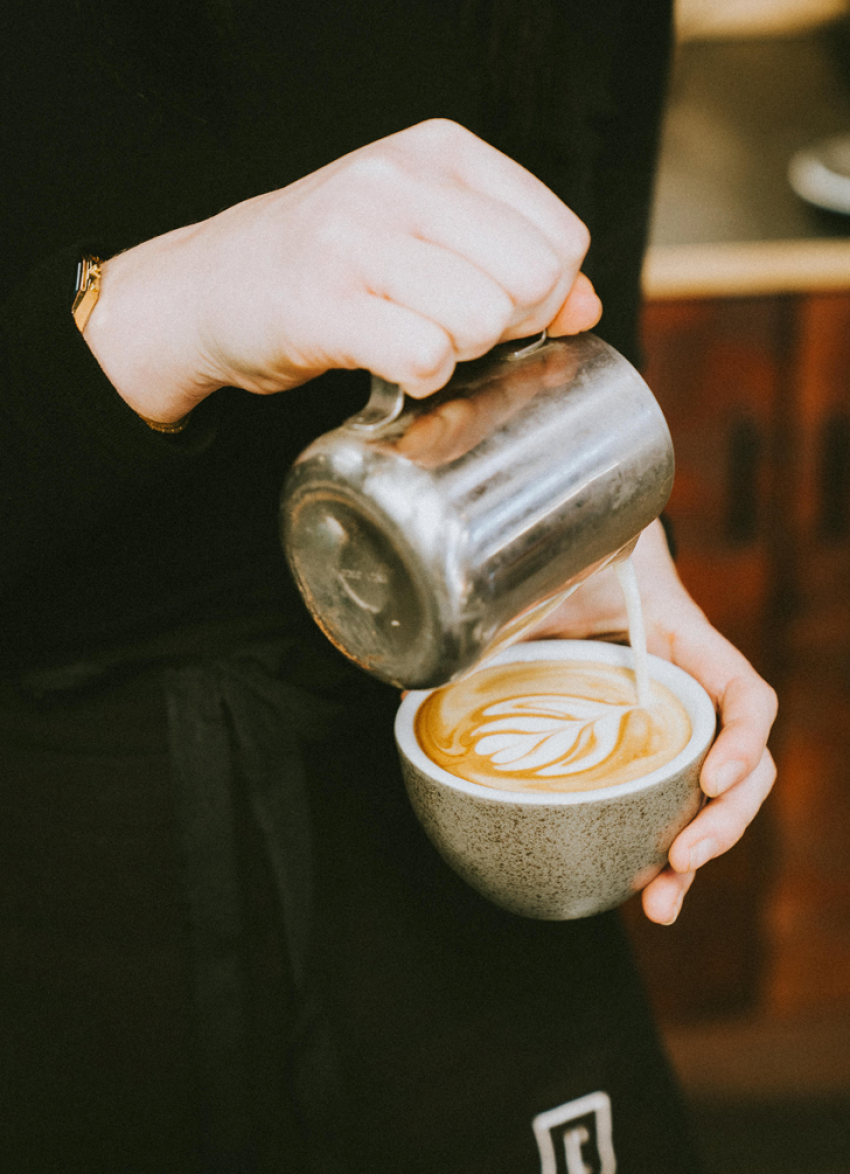
After a short stint studying fine arts, L'affare roaster Saskia Strand-Saseve gave into her love of coffee. We talked to her about roasting, what drew her to the industry and how she takes her coffee.
This article was created in partnership with L'affare
dish: What made you want to be a coffee roaster?
Saskia:I've always had an infatuation with processes. When I was taught to brew coffee a few years back, I was enthralled by the tiny little details involved in such a seemingly simple task. I ended my short-lived stint studying fine arts and threw all of my energy into understanding coffee in all of its possible forms.
Looking in from the outside into Aotearoa's coffee community, as a very young and eager Pasifika woman, I would always try hard to imitate the effortlessly cool baristas, account managers, and coffee entrepreneurs.
Roasting had always been a distant dream. It combines my love of following and tweaking recipes, developing a product produced by incredible communities and serving it to a variety of communities.
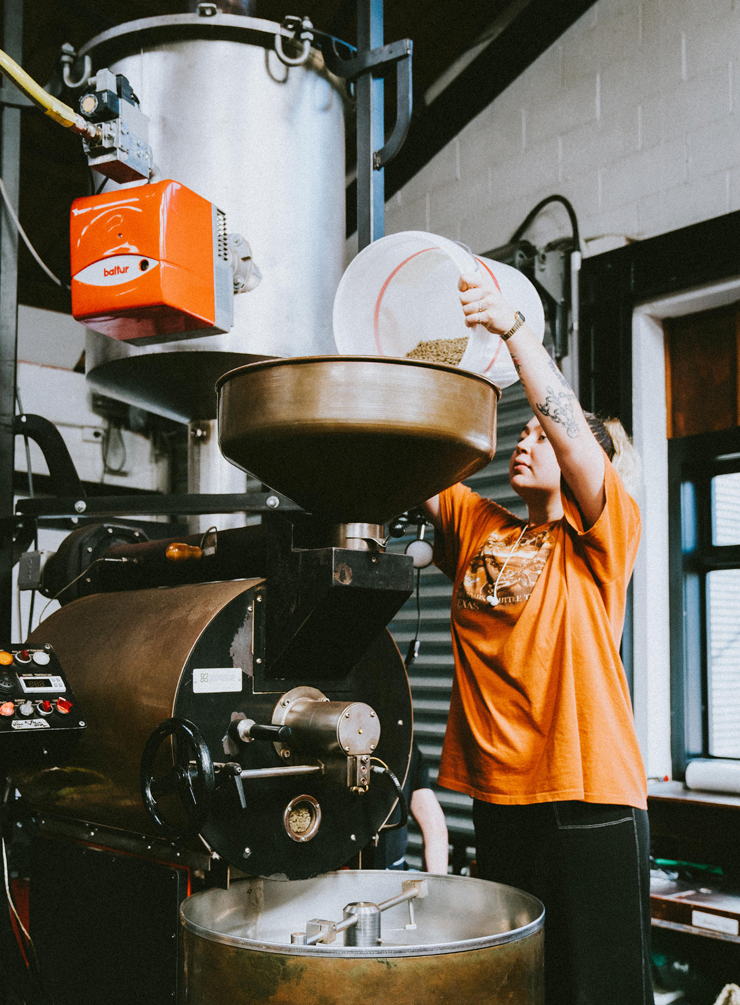
Saskia pouring beans into the Petroncini roasting machine
How did you become a coffee roaster?
I had been at L'affare for a couple of months, and I could not contain my curiosity about the roaster sitting in the corner of the building. I expressed my innate interest to Dave Green, L'affare's coffee specialist, and he sussed me a few days of training with the one and only Kerry Murray (L’affare’s Head Roaster at the time). We spent a few days at the roaster going through profiles, test roasting, gossiping, and goggling at a few different roasters at different sites.
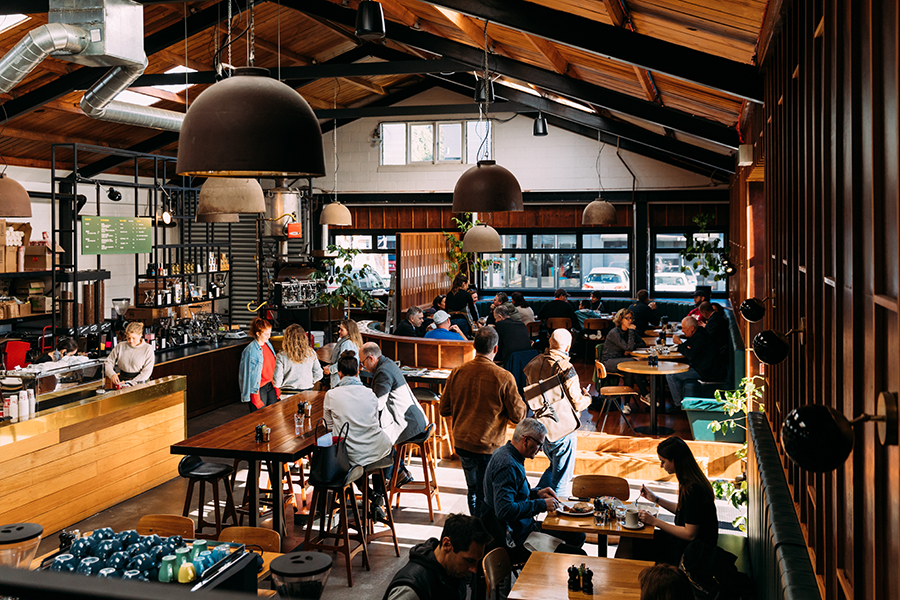
L'affare Newmarket
What does it take to be an excellent coffee roaster?
My experience does not come close to a lot of the legends in my industry but I do know that an excellent roaster is not defined by one's own flavour preference. I believe an excellent roaster is an individual that takes into account all aspects of roasting, has an open mind to all forms of roasting styles, and has a passion for the whole process of coffee from seed to cup. I suppose my flavour preference would be balanced, in terms of the coffee beans themselves, and the way that all aspects, environments, and people involved are treated.
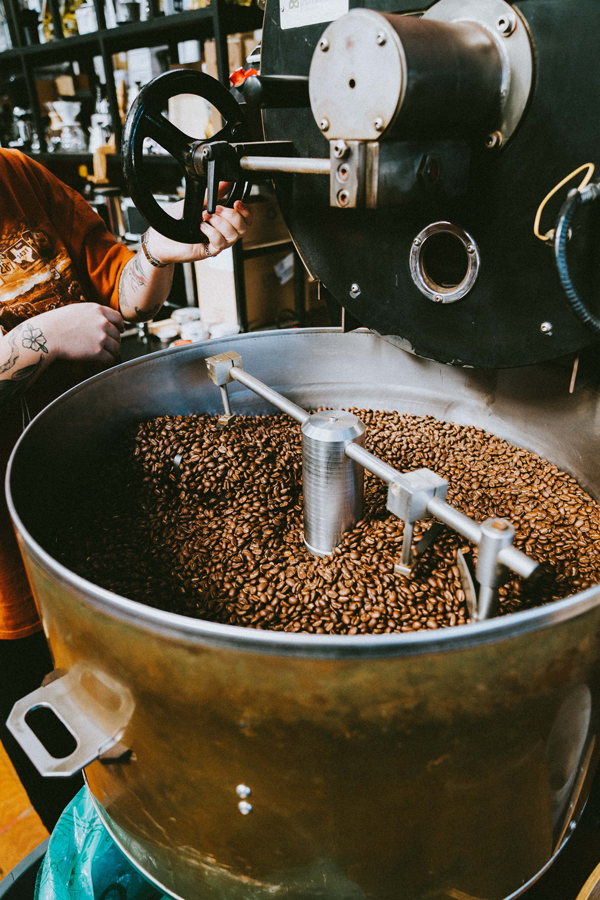
When you drink coffee, can you tell the roast level by taste?
I like to think I can. It's not too difficult to tell the roast level once you understand the whole process. Everything clicks into place after you know how something is developed, from start to finish, and how equipment commonly acts.
Can you please take us through the steps of the process you put a bean through from when it arrives to when the first sip is taken?
This process is so exciting for me to explain, when I'm selling beans at work I often get lost in a spiel and take way too long to get someone their 200g bag of Colombia. So, I receive green stock, which are single origin beans in burlap sacks, from our HQ in Wellington. When they arrive, the Fair Trade Organic beans are stored separately to coincide with our BioGro certification. A usual roast day for me starts early, with the machine heating for around an hour, while I do a cupping to check that everything’s in order with our coffee.
When the roaster has been heat-prepped, and is at the right temperature according to the origin and kilogram load, the beans are dropped into the drum and roasted for a precise amount of time at controlled temperatures. When the beans begin to make a cracking sound, indicating the release of moisture and Co2 from their cores, I make a note on my roast chart and begin carefully watching the development of the bean. I do this by checking the colour, smell, temperature and Rate of Rise (the speed at which the temperature of the beans is increasing).
When I’m happy that the roast is complete, I drop them into the cooling tray. Once cooled, they're bucketed and stored, ready for our lovely baristas and customers. We use a super specific recipe at L'affare when brewing for espresso and pour over methods, which put simply is ground beans plus water in different measurements.

Do you have a favourite part of the coffee making process?
I personally enjoy the rush of making espresso coffee, it's kind of like a dance. I try and get a second faster each time, push another layer into a flat white's tulip (latte art), or add a new animal to the top of a cute kid's fluffy. My absolute favourite time of my work days though, is definitely a few roasts in. The green beans spin in the drum, I've got music and a cup of coffee, and the sun streaming in through my large east-facing window.
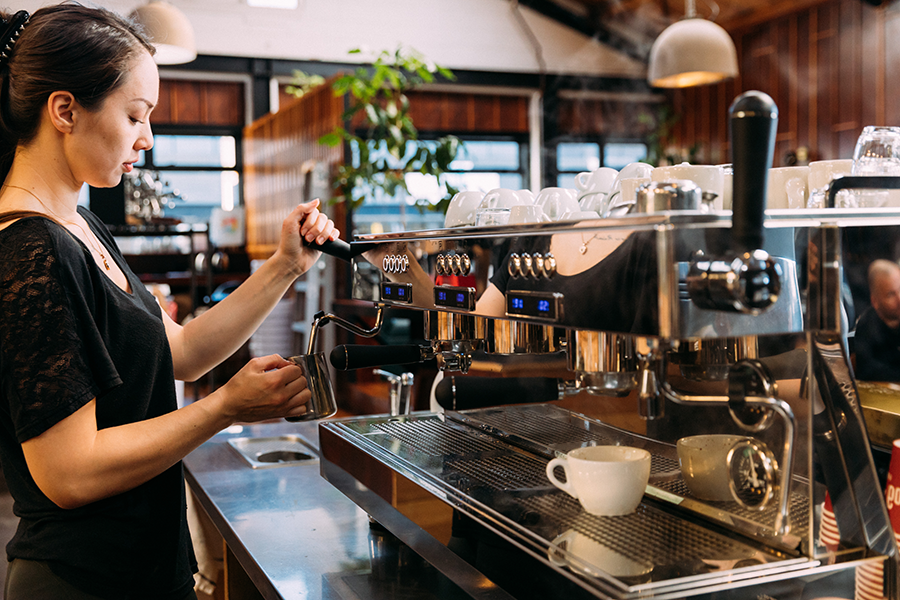
One of the L'affare Newmarket crew making coffee.
What are the components that make a good coffee?
High quality beans and high quality machines. And of course the person making it.
What is the best non-dairy milk to make coffee with?
I'm frothing Allgood Oat Milk. It is so creamy and balanced and doesn't change the flavour of the coffee. It's amazing. Everyone's gotta try it.
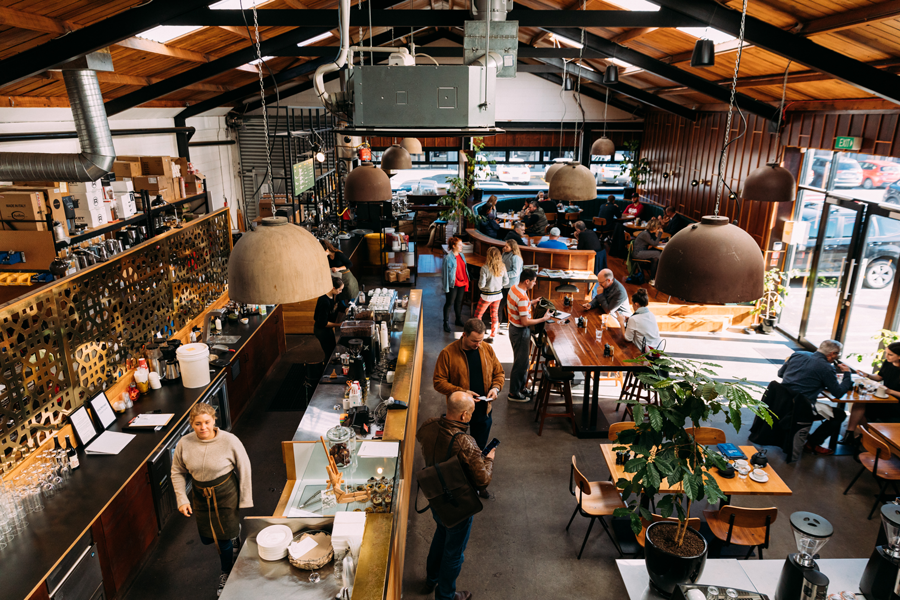
L'affare Newmarket
What is your favourite food to have with your coffee?
I really like our Black Rice Porridge at L'affare Newmarket, it's light but filling, sweet, textured, and a little bit tangy from our Raglan Co. Coconut yoghurt.
How do you take your coffee?
A filter, V60 or cold brew is my boujee drink, especially if I'm at a specialty coffee place. An oat flat white is my comfort coffee, 'cause it's all warm and creamy.
Check out the L'affare Facebook page here, or Instagram here.
L'affare
laffare.co.nz
latest issue:
Issue #120
As the days become shorter, and the nights cooler, the latest issue is perfectly timed to deliver delicious autumn dishes. From recipes using fresh seasonal produce such as feijoas and apples, to spectacular soothing soups and super-quick after-work meals in our Food Fast section, we’ve got you covered. With Easter on the horizon, we feature recipes that will see you through breakfast, lunch and dinner over a leisurely weekend holiday, and whip up chocolatey baking treats sure to please. We round up delicious dinners for two and showcase a hot new Korean cookbook before heading south to Dunedin to check out all that’s new in food and dining.The latest issue of dish is on sale NOW at all good bookstores and supermarkets – don’t miss it!

